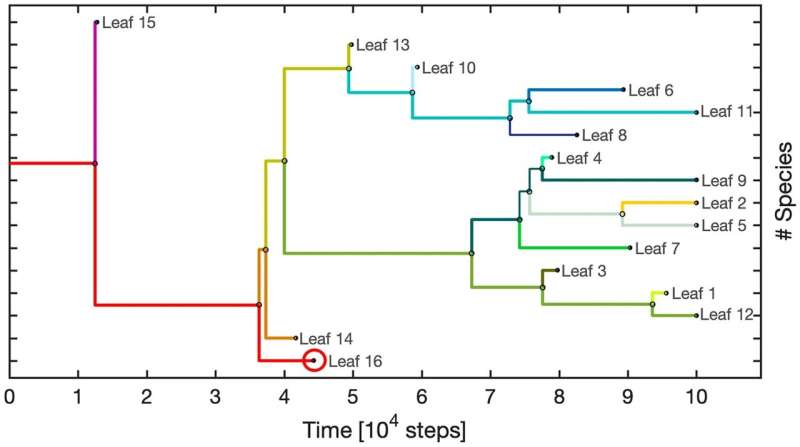This article has been reviewed according to Science X's editorial process and policies. Editors have highlighted the following attributes while ensuring the content's credibility:
fact-checked
trusted source
proofread
Mathematicians simulate origin and evolution of biodiversity

Wageningen scientists have simulated the evolution of biodiversity through a mathematical approach. In doing so, they proved the long-held belief among biologists that biodiversity creates robust ecosystems. The researchers published their results in Theoretical Ecology.
Imagine strolling through the forest, a small park, or simply through your backyard: amidst the grass, you will find dandelions, clovers, daisies, and buttercups. Bees, bumblebees, and flies gracefully drift from one flower to another, while beetles, bugs, worms, and snails navigate through the vegetation. Approximately 9 million species of organisms inhabit our planet. "It is quite remarkable that they all coexist side by side."
To comprehend how this remarkable richness of species came into existence and how it continues to evolve, Master's student Elena Bellavere and her supervisors developed a mathematical and computer-based analysis. They started a simulation with a single species, analogous to the earliest life on Earth. The calculations demonstrated that numerous new species rapidly emerged. Thus, confirming what biologists have long suspected—it is advantageous for ecosystems to encompass a diverse array of species.
"If a single species were to dominate continuously, it would deplete essential natural resources, such as food," explains Joshua Dijksman, associate professor of Physical Chemistry and Soft Matter. "It is precisely due to fluctuations in species and population numbers that no dominant species emerges." This is how an ecosystem endures.
More information: Elena Bellavere et al, Speciation in a MacArthur model predicts growth, stability, and adaptation in ecosystem dynamics, Theoretical Ecology (2023). DOI: 10.1007/s12080-023-00564-2
Provided by Wageningen University





















